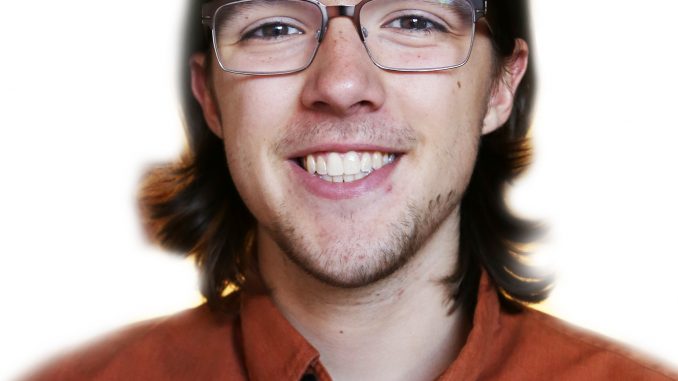

In the summer of 1954, my grandfather sat nervously in a crowded bus. He and a load of other military men were bound for Harrisburg to conduct their physicals. But, unlike most others, he wasn’t being tested to see if he was fit to fight.
For my grandfather, the word “service” doesn’t have anything to do with combat.
When we think about the concept of draft evasion, we immediately imagine scenes of radical college students burning draft cards in the 1970s. The truth is, people were refusing to fight long before the war in Vietnam.
A conscientious objector, or a CO, is someone who morally objects to serving in the armed forces, usually for religious reasons. My grandfather, a Mennonite, was one.
On Veterans Day, we celebrate those who served in our nation’s military. In doing so, we accept a narrow definition of the word “service,” and exclude many who chose to give of themselves in a different way. As a nation, we should also take time to honor those who served alternatively.
Being a conscientious objector is not about being too craven to see a battlefield – it’s about being strong in one’s commitment to peace. COs don’t receive a “get out of war free” card, but instead go somewhere they can serve the country without compromising their religious or philosophical beliefs.
Today, the decision not to fight is as easy as not enlisting. But before the military draft was discontinued in 1973, refusal to join the military had to be a conscious, and often unpopular, choice.
My grandfather recalled his days in a public elementary school during World War II. My family is Mennonite, a Christian denomination that holds pacifism as one of its highest values. Believing that one must always seek alternative solutions to violence was not an easy ideology to follow during one of the most popular wars in history. Even when he was too young to be drafted, my grandfather was taunted by his classmates as a “conchie,” a derogatory term for conscientious objectors.
For military-age males, the consequences of conscientious objection were far more severe than name-calling.
Lloy Kniss, who would later write the memoir “I Couldn’t Fight,” was an objector to the first World War. At that time, COs were still forced to join the military, and in some cases were even required to wear the uniform and carry a gun. My grandfather told me Kniss refused to don the uniform. When he did, “he was really beat up bad… The other [soldiers] said, ‘You yellow-belly. You’re afraid to fight.’”
By the time my grandfather was drafted in 1954, the Korean War had come and gone and the U.S. government had created programs to allow COs to enlist in other forms of service. When young men like my grandfather received the draft notice, they filed for 1-W service if they objected to enlisting in the military. 1-W was a two-year period of domestic service, equal to the amount of time others would spend in obligatory military service, at government-approved sites.
Those who didn’t want to fight were subjected to rigorous tests of their character. Most had to prove membership to a church and be backed by a pastor. Then there were the background checks. According to the Gerald K. Haines book “Unlocking the Files of the FBI: A Guide to Its Records and Classification System,” the FBI would investigate the claims of those who said they wouldn’t fight to see if they were legitimate. In 1967, the Selective Service System took that responsibility.
All my grandfather knew was that someone “had a way of looking at your background.” What did these people look for?
“If you weren’t a peaceful person,” my grandfather said. “If you got in trouble with other people, if you were mean.”
So, provided you were backed by a church and not a “mean” person, the government granted you the right to refuse the draft and serve the country in another way.
For my grandfather, this meant going to an understaffed tuberculosis hospital in South Mountain, Pennsylvania. At the South Mountain Tuberculosis Sanatorium, now called the South Mountain Restoration Center, scores of young men served the country by taking care of its sick and dying.
When our conversation turned to the modern day, discussing whether we thought the draft would ever come back and how warfare has changed, it was clear to me that what has remained constant is my grandfather’s idealogy.
“The United States is a warlike country – the heroes in America are the ones who were in the army,” he said of society’s general sentiments. “I think the heroes are those people who go into West Africa and help people that need medical assistance.”
I agree, and I think these heroes should be celebrated.
On Veterans Day, many families will honor a tradition of military service. It’s different in my family – my legacy is one of resistance and serving alternatively, and I am proud of that. The people who served without lifting a gun deserve just as much thanks and recognition as combat veterans.
When we honor our alternative servicemen, we also celebrate a commitment to democratic ideals. As Lloyd Gingerich recognized in the pamphlet “A Christian Response to War,” it is necessary to “thank and respect our government for making provision for those who have objections to participating in war.”
Rather than forcing its citizens into military service, our country supports the individual right to oppose warfare. Whether we fundamentally disagree with the military or see it as a place of honor, we can decide for ourselves who our heroes are.
So on Veterans Day, remember that there is more than one way to serve. Give the same honor to those who served with a thermometer as with a rifle.
Tyler Horst can be reached at tmhorst@temple.edu. The Essayist is the The Temple News’ recurring series of personal essays.


Be the first to comment